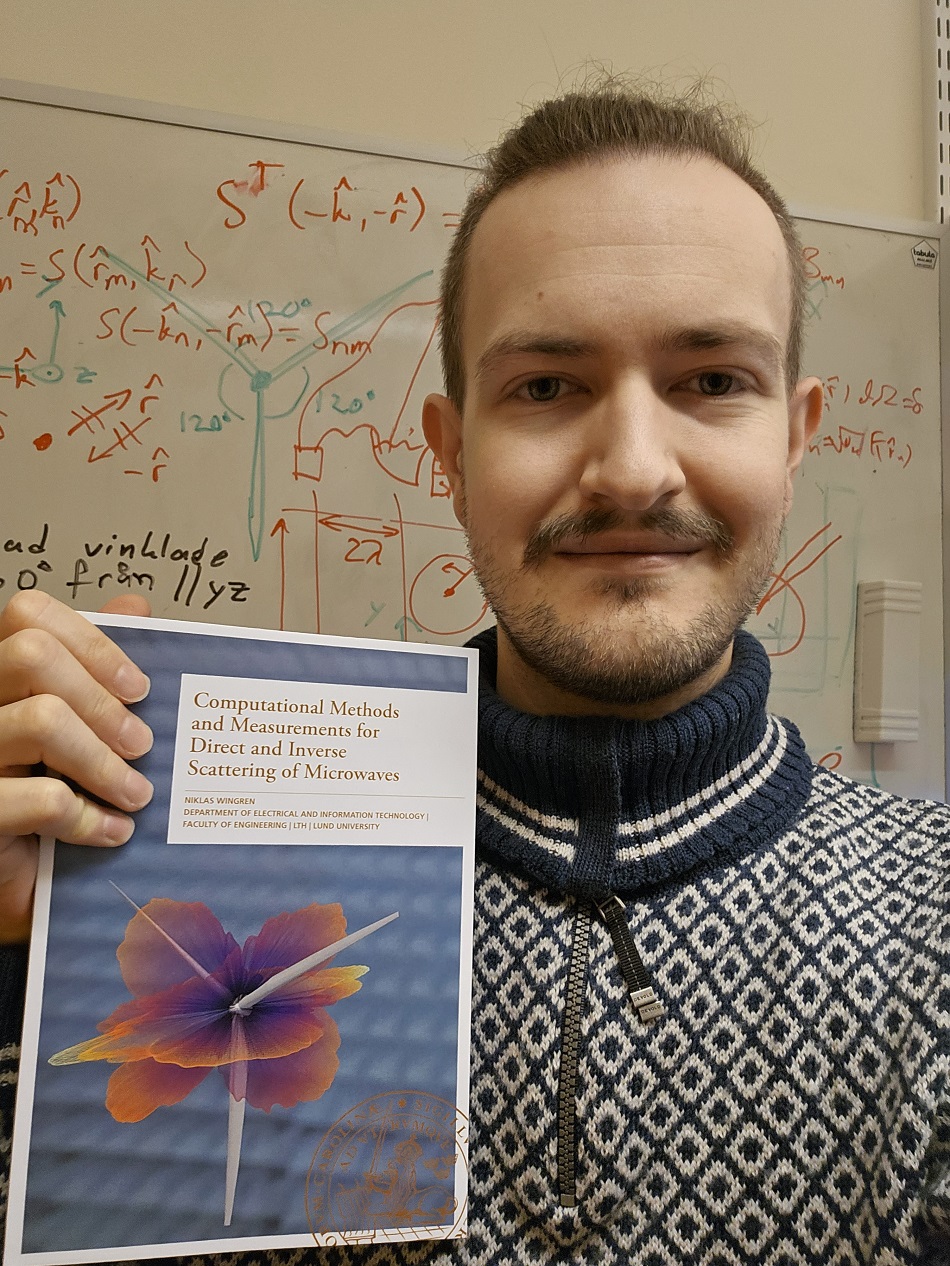Kalendarium
Thesis defence: Computational Methods and Measurements for Direct and Inverse Scattering of Microwaves

Disputation
Tid:
2024-04-05 09:15
till
13:00
Plats: E-house, E:1406.
Kontakt: niklas [dot] wingren [at] eit [dot] lth [dot] se
Niklas Wingren defends his thesis: Computational Methods and Measurements for Direct and Inverse Scattering of Microwaves.
The problem of electromagnetic scattering has long been important in radar, where it is the mechanism for detection. This is often called the direct scattering problem, where a known object is illuminated by an incident wave and the scattered wave is computed. In Paper I, a computational code implementing the finite element-boundary integral method is presented. The code, which is publicly available at https://www.github.com/nwingren/fe2ms, was developed using open-source software to accelerate the development process. While this code is verified in Paper I, there were no comparisons to measurements. In Paper II, a complete design process was performed using the code from Paper I, with manufacturing using 3D printing and measurements of the performance to validate the computations. This acted both as a demonstration of using the code practically, and as a validation. One advantage of the finite element-boundary integral method used in the code is that problems with highly complex media can be solved. This was utilized in Paper III where characteristic modes were computed for a an inhomogeneous, bianisotropic, and nonreciprocal object.
A different problem is that of inverse scattering, for which the scattered wave is known but the object or incident wave is unknown. This is a more complicated problem which requires the modern computational methods available today, and can be used to discern properties of an object, for example for nondestructive testing. In Paper IV, a method for nondestructive testing of singly curved composite panels using millimeter waves is presented together with measurements of real panels. The method is based on computational electromagnetics and was designed specifically for detection of sparsely distributed flaws in such panels. Microwaves and millimeter waves are relatively new in nondestructive testing compared to other methods like ultrasound. One possible development would be to combine the new and the old by utilizing interaction between acoustic and electromagnetic waves. As a way to demonstrate that this might be possible, microwaves scattered by ultrasound were measured in Paper V in air, where the interaction would be much weaker than in nondestructive testing settings.
Link to thesis i LU Research Portal:
Zoom link. Zoom ID: 62684643819.
